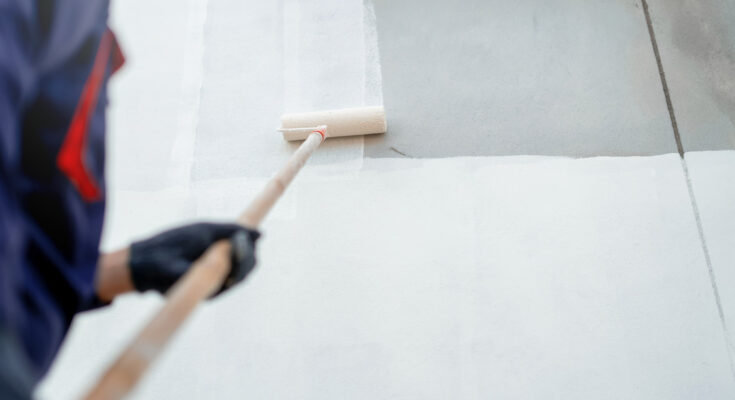This High-Tech Paint Could Be The Secret To A More Energy Efficient Home
There are plenty of well-known paint tricks that can keep your home cooler on summer days, but scientists are starting to revolutionize energy efficiency in homes by using groundbreaking technologies. These high-tech paints take the advice to choose a light color for your exteriors one step further, creating a thermal barrier that reflects the heat in the summer and retains warmth in the winter, and, depending on your desired effect, you have two different options to choose from. The first is a color-changing paint that will automatically adjust to outdoor temperature, getting lighter during the summer months to help reflect sunlight, and darker during the winter to absorb heat better. The second is an ultra-white paint that reflects the sun, potentially lowering heating and cooling costs without the need for expensive renovations.
While conventional paints and cool roofs might regulate heat a little, these next-generation technologies are designed to help reflect sun, maintain comfortable indoor temperatures, and help out on the electric bill during those high-use months. While not a complete replacement for proper insulation, these paints could help enhance existing methods and are ideal for hard-to-insulate areas like brick walls or older homes where traditional insulation isn’t possible. Places with renovation restrictions, like apartments or rental homes, could also benefit from the paints, and their neutral colors make them options that are sure to work alongside just about any architectural style.
How smart paint works
The color-changing paint, developed by designer Joe Doucet, helps absorb heat by turning dark grey at 77ºF. Anything above that makes the paint go white and begin reflecting the sun, and in turn, cooling the inside of your house. This is also the perfect way to get the best of both worlds if you just can’t decide on a paint color for your home. With the color-changing paint being so adaptable, it could be utilized almost anywhere that has proper seasons and would benefit from both heating and cooling modes.
The ultra-white paint, on the other hand, was developed by engineers at Purdue University and achieves its effect by using high concentrations of barium sulfate particles. According to a study published in ACS Applied Materials and Interfaces, these particles can reflect up to 98.1% of sunlight, which can help lower energy costs when trying to cool your house. Of all the creative ways to cool your house without an air conditioner, this might just be the most passive, and would work wonders in hot climates. Professor Xiulin Ruan, a researcher in the study, estimates that if you cover a 1,000 square foot roof, you could get the cooling power of 10 kilowatts, which is more than a standard air conditioner in most houses. These new paints could quickly revolutionize the way we look at heating and cooling our homes.
